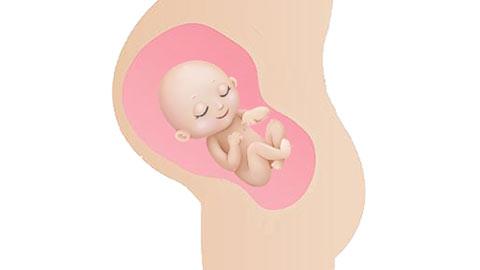 A large part of physically preparating for labor and delivery happens naturally on its own. But there are some simple steps you can take to support your body and prepare your mind.
A large part of physically preparating for labor and delivery happens naturally on its own. But there are some simple steps you can take to support your body and prepare your mind.Third-Trimester Body Changes1
- Your breasts may continue to grow and your nipples might start leaking colostrum (the liquid that comes in before breast milk and has important nutrients and antibodies for your child).1,2
- You’ll continue to gain weight, about 1 pound a week3. In this trimester, you should be consuming an extra 450 calories per day over your prepregnancy diet. 4 (That’s not as much as you think. A whole-wheat English muffin topped with a sliced apple and 2 tablespoons peanut butter will get you there.5-7)
- You may have Braxton-Hicks contractions. These are practice contractions, preparing your body for the real thing. They are unpredictable and weak—unlike the steady and strong contractions you’ll feel in labor.1
- You may feel more pain in your back as the weight of your pregnancy increases. Plus, pregnancy hormones relax the ligaments that connect your bones in the pelvic area, which can make your back uncomfortable. A heating pad (on the lowest setting) or ice pack often helps.1
- Heartburn can increase during the last few months as the uterus gets larger with your developing baby’s growth and presses against your stomach.2
- During the last weeks of your pregnancy, you might notice a decline in movement. This is very common: It’s getting pretty tight inside your uterus, so there’s not much room for your developing baby to move around. But less movement can also be a sign of trouble.8 If you think your developing baby is really moving less—and not just replacing strong kicks with more subtle stretches—call your doctor right away.
- Frequent urination, hemorrhoids, and vaginal discharge are common toward the end of pregnancy.1
Preparing Your Mind for Delivery
- Antenatal (childbirth education) classes allow you and your partner to become familiar with the stages of labor, methods for labor and delivery, and forms of pain management.9 Some classes focus on one method, such as Lamaze; others introduce you to many different methods. Check that you’re signing up for the one that best suits your needs and interests.
- Parenting classes are ideal for first-time parents who have limited experience with children. These classes cover some of the basics, such as feeding, bathing, and diapering your child.9
- Sibling classes are a great way for a big brother or sister to learn about the role of an older sibling.10
Bringing Mind and Body Together
- Who will be present in the delivery room11
- Pain relief options (especially important if you are trying for a natural delivery), including massage, breathing techniques, and positive imagery12,13
- If you’re OK with pain medications, what kind you would prefer12,13
- Your thoughts on having a C-section14
References:
1Mayo Clinic. “Third Trimester Pregnancy: What to Expect.” http://www.mayoclinic.org/healthy-living/pregnancy-week-by-week/in-depth...
2WomensHealth.gov (Office on Women’s Health, U.S. Dept. of Health & Human Services.). “Pregnancy, body changes and discomforts.” http://www.womenshealth.gov/pregnancy/you-are-pregnant/body-changes-disc...
4EatRight.org (Academy of Nutrition and Dietetics). “Healthy Weight During Pregnancy.” http://www.eatright.org/Public/content.aspx?id=10933
KidsHealth from Nemours. “Epidurals.” http://kidshealth.org/parent/pregnancy_center/childbirth/epidurals.html
American College of Obstetricians and Gynecologists. “Cesarean Birth (C-section).” https://www.acog.org/-/media/For-Patients/faq006.pdf?dmc=1&ts=20160204T2...




